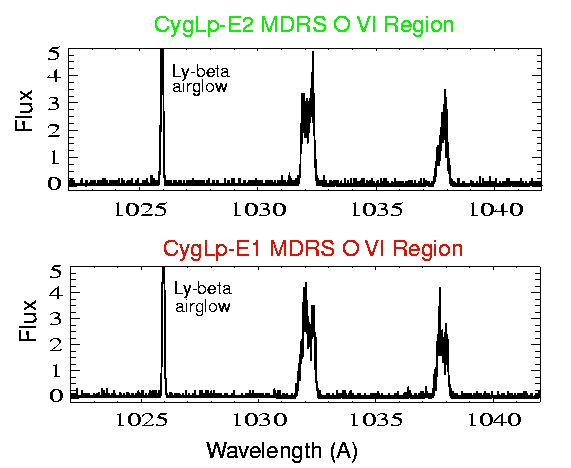
Information and presentation courtesy of William Blair, JHU.
FUSE observations can tell us much about the cooling gas in these titanic interstellar collisions. For instance, the figure below shows a portion of FUSE spectrum around two emission lines of highly ionized oxygen, O VI (called "oh-six"). The presence of these strong lines tells us that the supernova blast wave is still traveling about 180 km/s (Yes, boys and girls, per second! Which translates into a bit over 110 miles per second or over 400,000 miles per hour!). The widths and shapes of these spectral features, and the changes from one position (top panel) to another (bottom panel) tells astronomers how the gas is moving differently from position to position. Doing this experiment using emission lines from "hot" gas and "cooler" gas allows them to study the detailed structure of the cooling zone behind the blast wave. This is a "laboratory" that simply cannot be duplicated on earth!

Caption: A 20 Angstrom region of FUSE data surrounding the lines of highly ionized oxygen, which arise in the supernova remnant shock fronts. This is called an "emission-line" spectrum. The two panels show differences from two adjacent positions in the upper "white" cloud in the picture above. The narrow line at left in this figure is from the residual tenuous earth atmosphere ("airglow") above FUSE, and is not related to the supernova remnant.
Photo credits: (top) Digital Sky Survey image. courtesy of the
ESA Hubble Information Centre.
(middle) Optical/UV color image courtesy of Charles Danforth, JHU.